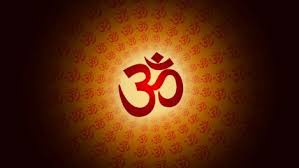Sanatan Dharma, often referred to as Hinduism, is one of the world’s oldest spiritual and philosophical traditions. The term “Sanatan Dharma” comes from Sanskrit, where:
- Sanatan means “eternal” or “timeless.”
- Dharma means “duty,” “law,” “order,” or “righteousness.”
Thus, Sanatan Dharma translates to the “Eternal Law” or “Eternal Way of Life.” It is not just a religion but a comprehensive system of living that encompasses spirituality, ethics, philosophy, and practices aimed at achieving harmony with the universe.

How Sanatan Dharma Works in Respect to the World
Sanatan Dharma has had a profound impact on the world, both historically and in modern times. Its principles and practices have influenced global spirituality, philosophy, science, and culture. Here’s how it works in respect to the world:
1. Universal Principles
Sanatan Dharma is based on timeless, universal truths that transcend geographical and cultural boundaries. These principles include:
- Unity in Diversity: The idea that all beings are interconnected and part of one cosmic reality (Brahman).
- Dharma (Righteousness): Living in harmony with natural and moral laws.
- Karma (Action and Consequence): The belief that every action has consequences, shaping one’s future.
- Moksha (Liberation): The ultimate goal of breaking free from the cycle of birth and death (samsara).
These principles resonate with people worldwide, offering a framework for ethical living and spiritual growth.
2. Influence on Global Spirituality
- Yoga and Meditation: Practices like yoga, meditation, and mindfulness, rooted in Sanatan Dharma, have gained global popularity for promoting physical, mental, and spiritual well-being.
- Vedanta Philosophy: The teachings of Vedanta, emphasizing the oneness of existence and self-realization, have inspired spiritual leaders like Swami Vivekananda and influenced movements such as the New Age and Transcendentalism.
- Non-Violence (Ahimsa): The principle of non-violence, championed by Mahatma Gandhi, has inspired global movements for civil rights, peace, and environmental sustainability.
3. Contributions to Science and Mathematics
- Decimal System and Zero: India’s invention of the decimal system and the concept of zero revolutionized mathematics and science.
- Astronomy and Medicine: Ancient Indian scholars like Aryabhata and Charaka made significant contributions to astronomy and Ayurveda, which continue to influence modern science.
4. Cultural Exchange
- Spread of Indian Culture: Through trade and cultural exchange, Indian art, architecture, and spirituality spread to Southeast Asia, influencing countries like Indonesia, Cambodia, Thailand, and Myanmar.
- Festivals and Practices: Indian festivals like Diwali, Holi, and Yoga Day are celebrated worldwide, promoting cultural understanding and unity.
5. Environmental Stewardship
- Respect for Nature: Sanatan Dharma teaches that nature (Prakriti) is sacred and must be respected. This principle aligns with modern environmental movements advocating for sustainability and conservation.
- Rivers and Forests: Many rivers (e.g., Ganga) and forests are considered sacred in Sanatan Dharma, fostering a culture of environmental preservation.
6. Ethical and Moral Framework
- Dharma as a Guide: The concept of dharma provides a moral framework for individuals and societies, emphasizing duty, honesty, and compassion.
- Universal Values: Principles like truth (Satya), non-violence (Ahimsa), and self-discipline (Tapas) are universally applicable and promote harmonious living.
7. Influence on Global Leaders and Thinkers
- Mahatma Gandhi: His philosophy of non-violence and civil disobedience inspired leaders like Martin Luther King Jr. and Nelson Mandela.
- Swami Vivekananda: His speech at the Parliament of the World’s Religions in 1893 introduced Sanatan Dharma to the West and emphasized religious tolerance and universal brotherhood.
8. Modern Relevance
- Mindfulness and Well-being: Practices like yoga and meditation, rooted in Sanatan Dharma, are widely adopted for stress relief and mental health.
- Holistic Health: Ayurveda, the ancient Indian system of medicine, is gaining global recognition for its holistic approach to health.
- Interfaith Dialogue: Sanatan Dharma’s inclusive nature promotes dialogue and understanding among different religions and cultures.
9. Global Recognition
- International Yoga Day: The United Nations declared June 21 as International Yoga Day, recognizing the global impact of this ancient practice.
- UNESCO World Heritage Sites: Indian temples and monuments, such as the Taj Mahal and Ellora Caves, are celebrated as cultural treasures of humanity.
10. Challenges and Adaptations
While Sanatan Dharma has a profound global influence, it also faces challenges such as:
- Misinterpretation: Misunderstanding or oversimplification of its teachings.
- Commercialization: The commercialization of practices like yoga and Ayurveda.
- Cultural Appropriation: The adoption of its practices without understanding their spiritual context.
Conclusion
Sanatan Dharma is a timeless and universal tradition that offers profound wisdom and practical tools for living a meaningful life. Its principles of unity, righteousness, and harmony resonate with people across the globe, making it a significant force for positive change in the world. By promoting spiritual growth, ethical living, and cultural understanding, Sanatan Dharma continues to inspire and uplift humanity.
